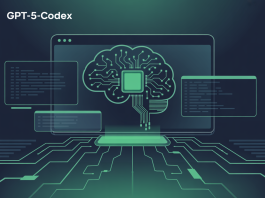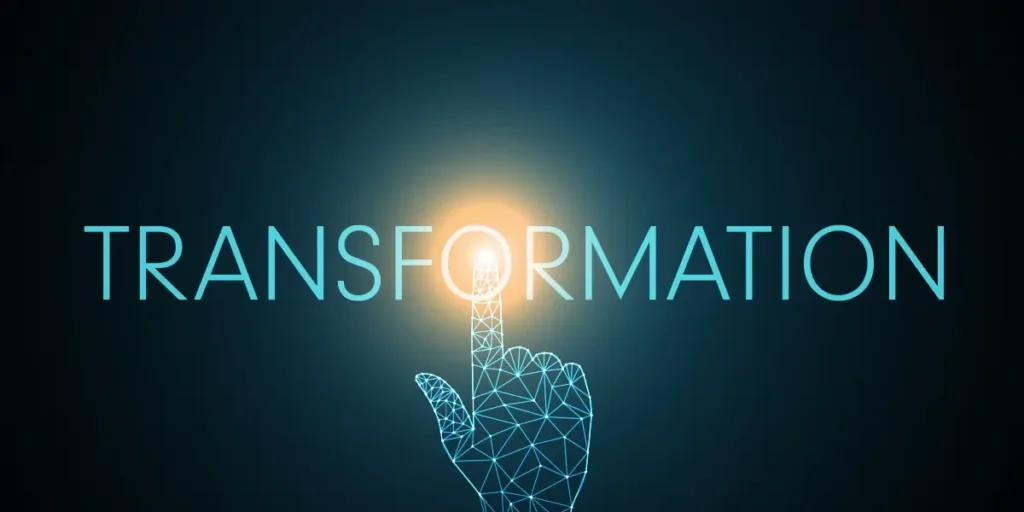Meta FAIR Released Code World Model (CWM): A 32B Open-Weights LLM That Thinks About What Code Does
Publication date: September 25, 2025
Headline: Meta FAIR releases Code World Model (CWM) — a 32-billion-parameter, open-weights research LLM trained on execution traces and agentic environment interactions to improve code generation, debugging and programmatic reasoning. Hugging Face+1
Introduction — why “world models” for code matter
Large language models trained on source text have dramatically improved code synthesis over the last few years. But text alone tells you what code looks like, not always what it does. Meta’s new Code World Model (CWM) takes a different tack: instead of only learning from static source code, CWM internalizes observation–action trajectories from running Python programs and agentic interactions inside containerized environments. The result is a research model designed to reason about program state, simulate execution, plan multi-step edits, and help close the gap between generating code and predicting the effects of executing it. Hugging Face
This release (model weights, technical report, evaluation code, demos and model card) is explicitly targeted at the research community under a non-commercial research license — a move that makes CWM a prominent open-weights contribution for anyone studying agentic code generation and program reasoning. GitHub+1
What CWM is (short version)
-
A dense, decoder-only autoregressive transformer with roughly 32 billion parameters. Hugging Face
-
Architecturally it uses 64 transformer blocks with an alternating mix of local and global attention (sliding windows up to 131k tokens), Grouped-Query Attention (GQA), and a 128k-token vocabulary. This allows very long contexts and structured reasoning for multi-file or long-horizon coding tasks. Hugging Face
-
Trained in a three-stage pipeline: pre-training → mid-training → post-training (SFT + RL). Mid-training focuses on code world modeling data (execution traces, agent interactions). Hugging Face
These core facts matter because they explain why CWM can be asked to “simulate” code execution internally: long contexts, execution-oriented training data, and a pipeline that explicitly targets reasoning and agentic behaviors. Hugging Face
The training signal that sets CWM apart
CWM’s central innovation is mid-training on world-model data rather than purely on static code tokens. The publicly reported training corpus includes:
-
>30,000 executable repository Docker images (constructed from many GitHub projects).
-
>200 million Python memory traces from running programs in containers.
-
~3 million agentic trajectories, representing simulated multi-step interactions between an LLM-guided agent and computational environments. Hugging Face
Put simply: instead of only reading commits and files, CWM also “watches” code run, sees errors, sees state changes, and experiences what happens after edits and commands. That data gives it a richer signal for planning, debugging, and multi-step synthesis. The release notes and model card give more specifics and provide access to code and checkpoints for reproducibility. GitHub+1
Architecture and capability highlights
A few architectural choices make the model better suited to long, programmatic reasoning:
-
Large context sizes: sliding global windows of up to 131,072 tokens, enabling multi-file contexts, long execution logs, or extensive REPL transcripts. Hugging Face
-
Grouped-Query Attention (GQA): improves efficiency of attention in large models. Hugging Face
-
Dedicated “thinking” mode: CWM introduces a system prompt convention that asks the model to produce an internal
<think>block for chain-of-thought–style reasoning, used in their recommended prompting templates. This nudges the model to separate internal reasoning from the final answer. Hugging Face
These features are deliberately chosen to support multi-step debugging, agentic planning and simulation-style reasoning about code behavior.
Evaluation: how does CWM perform?
Meta FAIR published benchmark results comparing CWM to other open models across several coding and reasoning benchmarks. Notable highlights include:
-
Competitive scores on math and reasoning benchmarks (e.g., Math-500, AIME variants) and strong performance relative to similar-sized models on specialized code benchmarks. Hugging Face
-
SWE-bench Verified—a verifiable coding benchmark—shows CWM with interesting modes: the model’s baseline and a “CWM + tts” configuration produce substantially different SWE-bench Verified scores, demonstrating the value of environment-aware evaluation. Hugging Face
Meta’s evaluation suite includes comparisons to other large open models and open-weights competitors. Keep in mind the model card stresses these are research-oriented evaluations: they do not claim production readiness and the model is explicitly released for research under a non-commercial license. Hugging Face
What “agentic coding” looks like with CWM
The CWM team built tools and demos that show how world-model training supports agentic coding:
-
ForagerAgent and repository images: to scale trajectories the researchers built executable repository images (Docker) and used an agentic crawler (“ForagerAgent”) that explores codebases, mutates code, runs tests and records observation–action traces. That process yielded millions of trajectories used in mid-training. GitHub+1
-
Neural debugger demo: repository demos include a “neural debugger” that leverages CWM’s ability to predict program state and suggest targeted edits. The repo provides starting code and inference examples to reproduce demos. GitHub
This environment+agent pipeline is exactly what people mean when they talk about LLMs doing “hands-on” programming: not just writing a file, but running, testing, debugging and iterating — all while reasoning about program state.
How you can try it (research access)
Meta released weights and artifacts in several forms:
-
Hugging Face model artifacts (facebook/cwm) — model card, SFT and pretrain checkpoints, and instructions for vLLM and Fastgen-based serving. Access requires agreeing to Meta’s non-commercial research license on Hugging Face. Hugging Face
-
GitHub repository (facebookresearch/cwm) — code for inference, environments, reproducing evaluations, model cards and demos. The repo includes pointers to PyTorch Distributed Checkpoints (DCP) and scripts to download them after agreeing to license terms. GitHub
Hardware note: running full evaluations/demos requires substantial memory/VRAM (the repository mentions something like ~160 GB combined VRAM for default configs) though Hugging Face notes quantized single-GPU inference is possible on ~80 GB VRAM. If you’re planning to experiment locally, check the repo instructions and the model card for setup details. GitHub+1
Risks, limitations and the release guardrails
Meta emphasizes that CWM is a research model with specific limits:
-
Non-commercial research license: weights are released under a fair non-commercial research license; usage is restricted and Hugging Face gating requires acceptance. Hugging Face
-
Not production-ready or aligned as a general assistant: CWM’s training and evaluation focus on code and reasoning; it has not been fully aligned for user-facing chat or general-purpose tasks. The model card warns against deploying it in production without additional evaluation and safety work. Hugging Face
-
Threat and safety assessment performed: Meta reports that they carried out an assessment of potential threats in line with their Frontier AI Framework and released a preparedness report. They conclude CWM does not materially increase risk compared to existing open-source models but note caveats. Hugging Face
Those guardrails matter: open-weights models can be extremely useful for research, but they also require careful operational and ethical consideration.
Why the community should care
-
New training signals for code research. CWM demonstrates that integrating execution traces and agentic interactions into large-scale model training materially changes what a model can learn — moving models toward causal, stateful reasoning about programs rather than just pattern completion. That opens new research directions in program synthesis, automated debugging, formal program verification, and model-based planning for software tasks. Hugging Face
-
Open-weights availability. A 32B open-weights release from a major lab provides a powerful baseline for the research community to experiment with world-model ideas at scale — reproducing experiments, testing failure modes, and innovating on agentic tooling. GitHub+1
-
Tooling and reproducibility. By releasing Dockerized repo images, evaluation code, and demos, Meta has given researchers concrete assets to reproduce the training signal pipeline — including how to collect trajectories and evaluate agentic behaviors. That’s unusually helpful for academic and industrial researchers alike. GitHub
Practical research directions enabled by CWM
Researchers and engineers can use CWM as a starting point for many experiments:
-
Model-based program repair and mutation testing — use CWM’s world-model priors to propose patches that have a higher chance of passing test suites. Hugging Face
-
Agentic CI assistants — instrument CI pipelines with LLM-driven agents that can triage failing tests, propose minimal fixes, and validate by running isolated tests in containers. GitHub
-
Formal verification augmentation — combine symbolic verification with CWM’s predictive simulation to guide verification and counterexample generation. Hugging Face
-
Research on training signals — ablation studies to quantify how many trajectories, what kinds of executions, and which reward signals most improve downstream code reasoning.
Quick start checklist for researchers
-
Read the model card and CWM tech report for license and safety requirements. Hugging Face+1
-
Request access on Hugging Face (accept the research license) to download model artifacts. Hugging Face
-
Clone the facebookresearch/cwm GitHub repo to get demos, evals and the
download_pytorch.shscript for DCP checkpoints. GitHub -
If you plan to reproduce evaluations, confirm you have the recommended compute and follow the repo’s environment.yaml / micromamba instructions. GitHub
Final thoughts — a meaningful step, not the finish line
CWM is a bold, pragmatic step toward LLMs that understand code as stateful processes rather than static text. By releasing a 32B research model plus the training artifacts and evaluation code, Meta FAIR has equipped the research community with a powerful experimental platform for agentic code generation, neural debugging, and model-based program reasoning. That said, Meta and the model card are clear: this is a research release — one that needs careful, responsible exploration.
Expect to see rapid follow-up work from the community: replication studies, ablations on trajectory design, integration into automated testing workflows, and new agentic tools that combine symbolic program analysis with learned world-model priors. For anyone interested in the future of program synthesis and LLM-driven engineering, CWM is a model you should read about and experiment with — responsibly. Hugging Face+2GitHub+2
Sources & further reading
-
Meta FAIR CWM GitHub repo (facebookresearch/cwm) — code, demos, model card, reproducibility. GitHub
-
Hugging Face model card (facebook/cwm) — model details, architecture, datasets, evaluation table and access instructions. Hugging Face
-
Meta / AI at Meta announcement posts and social channels. X (formerly Twitter)+1
-
Early media coverage summarizing the release. MarkTechPost.
For quick updates, follow our whatsapp –
https://whatsapp.com/channel/0029VbAabEC11ulGy0ZwRi3j
https://bitsofall.com/perplexity-launches-an-ai-email-assistant-agent/
https://bitsofall.com/https-yourwebsite-com-meet-voxtream/
Google AI Research Introduces a Novel Machine Learning Approach







